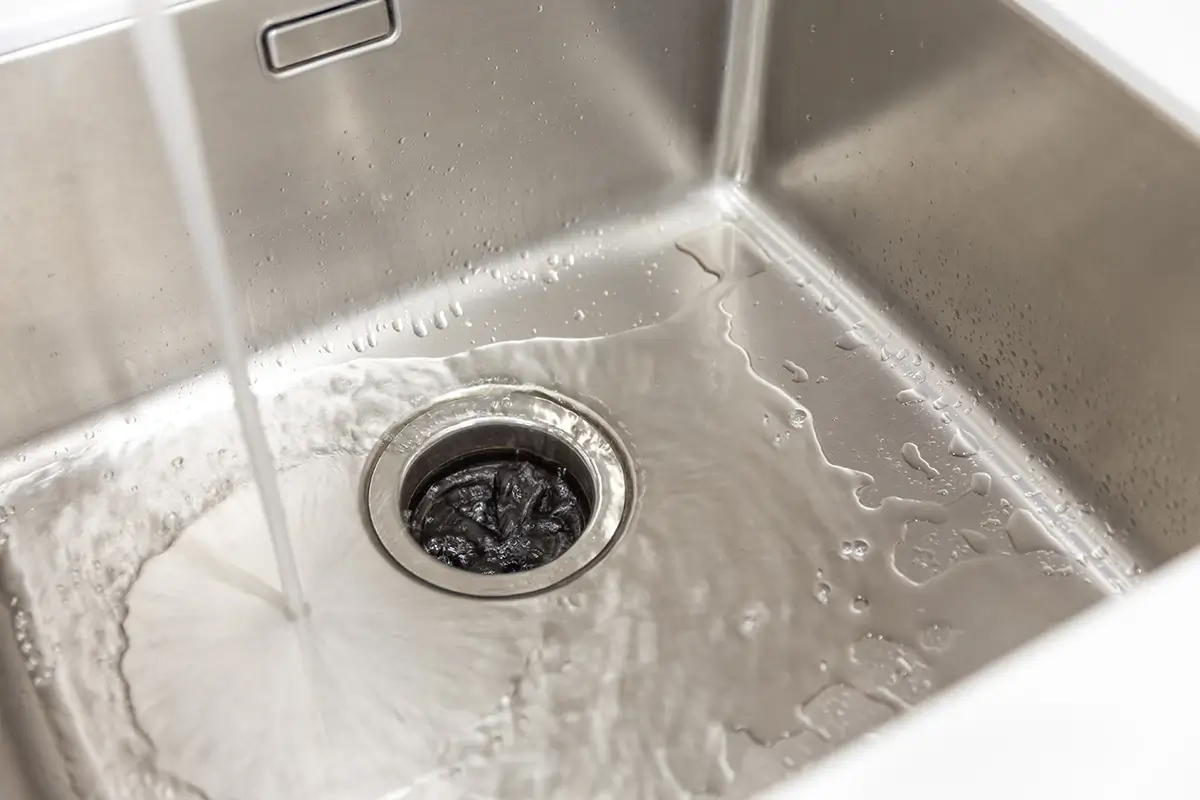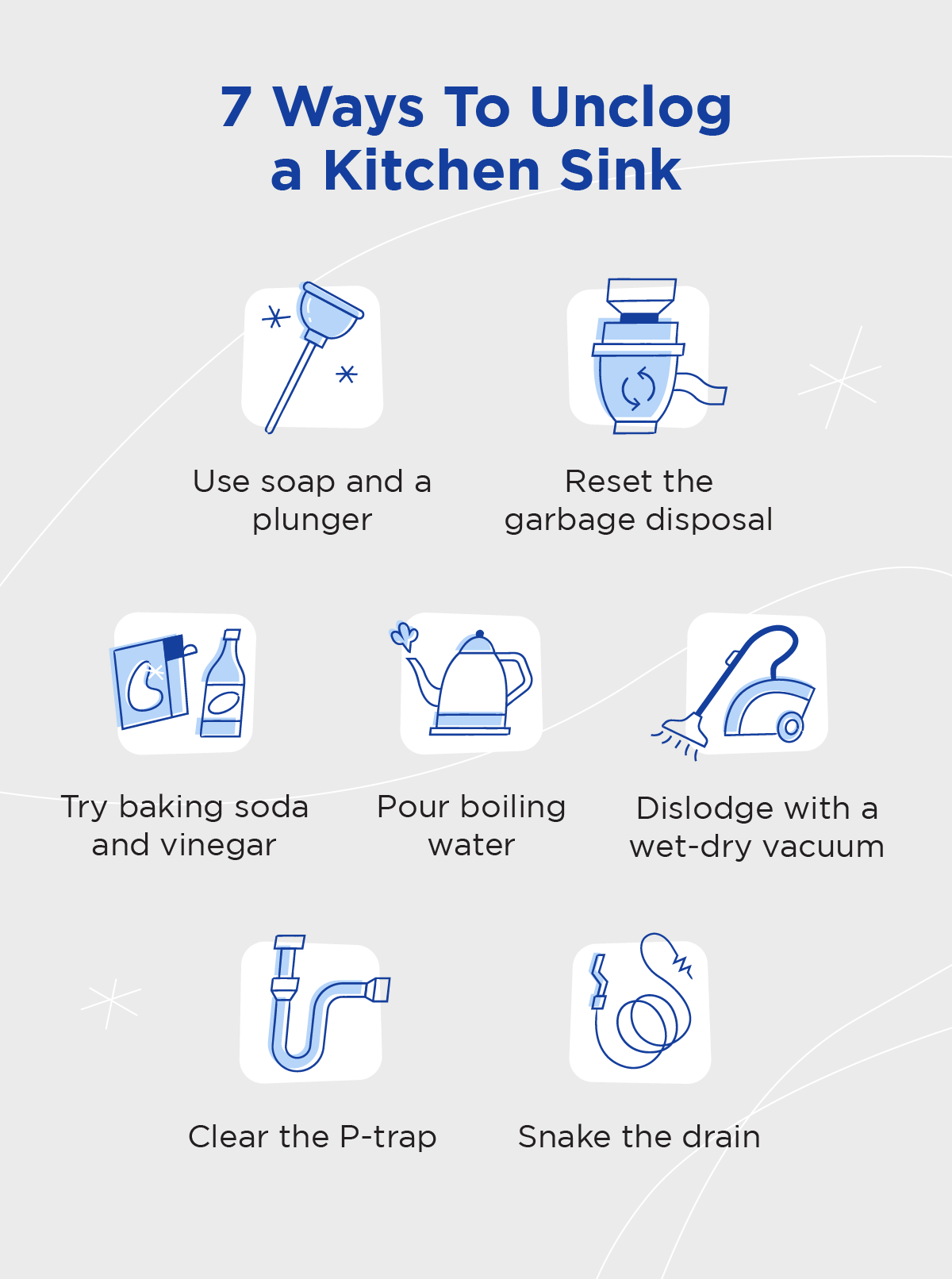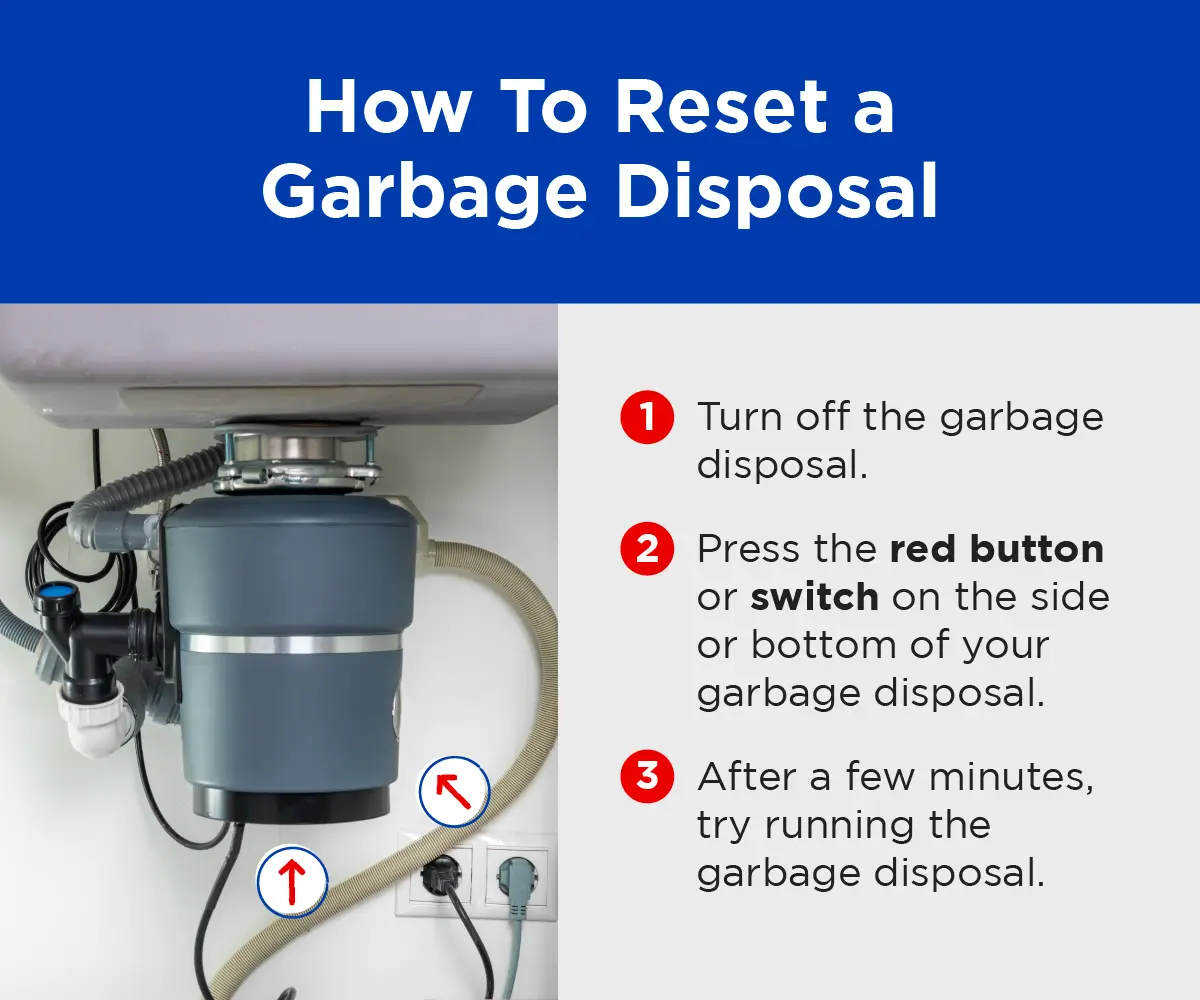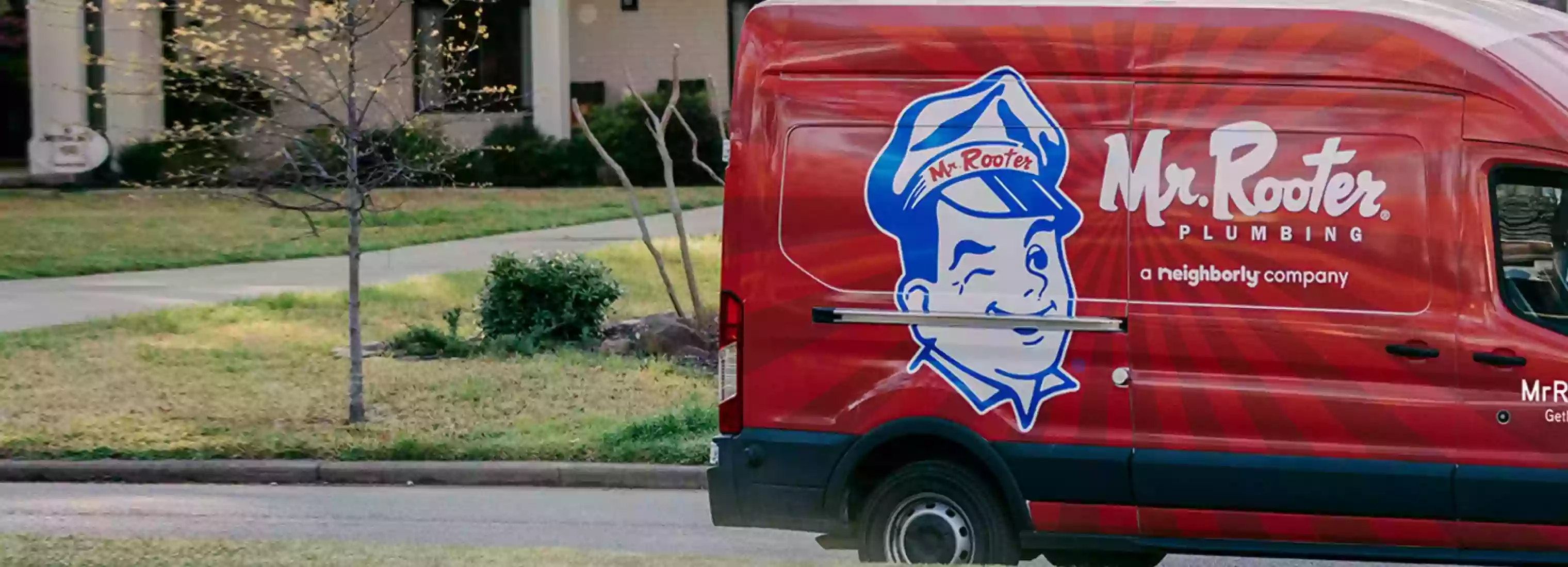How to Unclog a Kitchen Sink

To unclog a sink, run hot water to loosen the clog and add a drop of dish soap into the drain. Fill the sink partially and then use a plunger to push up and down on the drain opening. If effective, the suction should dislodge the clog.
Have you ever heard the phrase “everything but the kitchen sink” and wondered why the kitchen sink gets to stay? If you ever find yourself dealing with a clogged kitchen drain, you’ll quickly realize how essential it is.
Without a working kitchen sink, everyday tasks in your home become more difficult. Washing dishes changes from a minor annoyance to a gigantic hassle. Even something as simple as filling up your water filter or water bottle can turn into an ordeal.
In this article, we’ll show you the best methods for how to unclog a kitchen sink, help you better understand what causes these obstructions, and learn when it’s time to call a professional.

1. Use Soap and a Plunger
This is probably the most common method of clearing a kitchen sink clog. Here’s how to remove an obstruction with this method:
- Run your hot water for a while to help soften the clog.
- Put a drop of dish soap into the drain opening and turn the water back on.
- Once the sink is partially full, grab your plunger and use it to push up and down on the drain opening.
If successful, it will pull (or push) the clog clear and leave your drain free from debris.
2. Reset the Garbage Disposal
In some cases, a clog isn’t the real culprit; it’s your garbage disposal. If the disposal has been making strange sounds or is not working, it may need to be reset.
There should be a button or switch on the side or bottom of your garbage disposal. Press the button or flip the switch into the reset position.
This will turn it back to factory default settings after a brief rest period. If that doesn’t fix your garbage disposal, you may need to contact a plumber.

3. Try Baking Soda and Vinegar
If the above methods don’t work, try using a fun science fair throwback to clear your drain.
- Pour one cup of baking soda down the drain.
- Follow the baking soda with one cup of distilled white vinegar.
- After pouring the vinegar, quickly cover the drain with a plug, stopper, or even a plate.
- Leave the drain covered for 30 minutes to allow the reaction to do its work.
- Finally, run hot water down the drain to see if the clog cleared.
4. Pour Boiling Water
Heat can help dissolve and dislodge the clog, allowing it to flow down the drain. Here’s how to safely attempt this method:
- Bring a pot of water to boil on the stove.
- While you wait, remove any standing water from the sink.
- Once boiling, slowly pour the water directly into the drain, ensuring it doesn’t splash onto you.
- Start by pouring a small amount of water down and gradually increase if needed.
Avoid this method if your drain is connected to PVC pipes, as boiling water may soften or damage them, leading to leaks or other issues. If you’re uncertain about the type of pipes you have, it’s best to seek the assistance of a professional.
5. Dislodge With a Wet-Dry Vacuum
If you own a wet-dry vacuum, it can be an effective way to remove stubborn blockages.
- Remove any standing water from the sink.
- Set the vacuum to wet mode to handle water.
- Place the vacuum nozzle directly over the drain opening, ensuring a tight seal.
- Cover any overflow openings with a damp cloth to create suction.
- Once everything is securely in place, turn on the vacuum and let it run for several seconds. The suction should help dislodge the clog and pull it up and out of the drain.
- Periodically check the vacuum’s water level and empty it as needed. Be cautious not to apply too much force, or you could damage the pipes or vacuum.
6. Clear the P-Trap
The P-trap is a U-shaped pipe found underneath sinks. Its shape creates a water seal that stops odors and gasses from traveling up the drain while also catching debris to prevent clogs. Clearing it out may solve the issue of your clogged sink.
- Position a bucket beneath the P-trap to catch any debris or water that may spill out.
- Use a pipe wrench or adjustable pliers to carefully loosen the slip nuts on both ends of the P-trap and remove it from the drainpipe. Some water may drain out at this point.
- Inspect the P-trap for any clogs or debris and use a wire brush or pipe cleaner to remove buildup.
- Once the P-trap is clear, reattach it to the drainpipe, ensuring the slip nuts are tightened securely to prevent leaks.
- Run water down the sink to check for proper drainage and ensure there are no leaks.
7. Snake the Drain
If all else fails, snaking the drain may be your best bet. To do this, you’ll need a plumbing snake (also called a drain snake) that can fit in a kitchen sink drain.
- Push the snake into the drain and twist it a few times once you hit the obstruction. This burrows the hook into the clog.
- Pull the clog out of the sink along with the snake.
- Repeat as needed to remove the whole blockage.
Additionally, you should always make sure it’s safe to snake your kitchen sink drain and that you’re not damaging your garbage disposal. Don’t try to force the snake down the drain if you encounter resistance, and avoid making sharp turns or aggressive movements.
When in doubt, call a professional to avoid causing additional damage to your sink or disposal.
Common Causes of Kitchen Sink Clogs and How To Avoid Them
From grease to food debris buildup, various factors can lead to blockages. Here are a few common causes of kitchen sink clogs.
Coffee beans and grounds
For people who use standard coffee makers, it’s easy enough to throw your grounds directly into the trash. However, those who use French presses may find themselves pouring coffee grounds into the sink drain.
Make sure to always dump coffee grounds in the trash can and not the sink. The fine grains of coffee can get stuck inside your pipe and turn into a clog over time.
Starchy foods
Keep starchy foods like beans, pasta, potatoes, and rice from going down the drain. If these foods get stuck in your drain, the constant exposure to water will eventually cause them to break into a gooey, sticky mess that’s more than capable of clogging your kitchen sink.
Kitchen grease
If you’ve ever rented an apartment, you were probably told to avoid pouring grease and oil down the drain. That’s because the grease will reconstitute into solid fat and clog your drain. And because fat is hydrophobic (repels water), no amount of running hot water will help you clear this clog.
Eggshells
Your garbage disposal may be capable of pulverizing eggshells into tiny bits, but your kitchen drain won’t appreciate it very much. Small bits of eggshell can stick around in your pipes and form clogs over time.
Soap scum
While less of a concern for the kitchen sink, soap scum can build up and form clogs in your pipes, especially if you use a lot of soap.
This is more likely to happen with bar soaps since they tend to be made of fats or have a fatty component. Detergents such as pump hand soap and dishwashing liquid generally don’t cause this issue.
How To Prevent Kitchen Sink Clogs
People often think their garbage disposal can save them from drainage problems in the kitchen. And while garbage disposals can help keep drains from clogging, they can’t prevent every clog.
Here are some great ways to prevent kitchen sink clogs:
- Purchase a food catcher: These wire mesh covers allow water and dirt to flow freely down your drain but keep larger food scraps out of it. When the catcher is full, you can empty it into your trash can.
- Clean the disposal regularly: You can grind ice cubes and citrus peels to clean grease out of the drain or remove buildup. It can also help eliminate any odors.
- Run hot water: Regularly flush the drain with hot water to help dissolve debris before it turns into a clog. This can also help your garbage disposal last longer.
- Don’t overload the disposal: Get rid of food scraps in small batches to prevent overwhelming the disposal and causing clogs.
- Schedule professional maintenance: Consider scheduling regular maintenance with a plumber to inspect and clean your drains to prevent clogs before they occur.
FAQ
Have more concerns about how to unclog a kitchen sink? Check out the answers to these common questions.
What is the best way to unclog a kitchen sink?
The best way to unclog a kitchen sink depends on the nature of the blockage and type of sink but often involves methods like using a plunger or a drain snake. Since every situation varies, it’s recommended to consult a plumber for expert advice and assistance.
Why is my kitchen sink backing up?
A kitchen sink may back up for various reasons, like a clogged drain, blocked P-trap, or a backed-up garbage disposal. Given the range of potential causes, consulting a plumber is the most direct way to get an accurate diagnosis.
How do you unclog a kitchen sink that has a garbage disposal?
To unclog a kitchen sink that has a garbage disposal, start by turning off the disposal and running hot water to soften the clog. Then use a plunger or a snake to dislodge the obstruction, being careful to avoid damaging the disposal. If the clog persists, it’s best to seek professional assistance from a plumber.
Call Mr. Rooter Plumbing® for Professional Clog Removal
While most kitchen sink clogs can be cleared with relative ease, that’s not always the case. If you have a particularly stubborn clog obstructing your drain, it’s time to bring in a professional for a kitchen drain service.
Give us a call or schedule an appointment online to have us come and make your kitchen sink usable again.
 Click to call
Click to call


